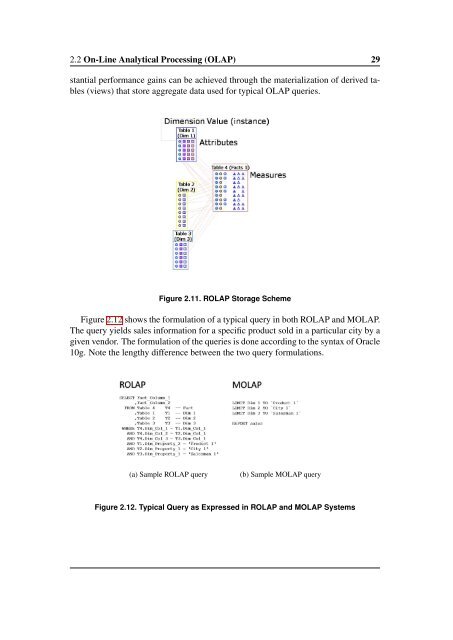Applying OLAP Pre-Aggregation Techniques to ... - Jacobs University
Applying OLAP Pre-Aggregation Techniques to ... - Jacobs University
Applying OLAP Pre-Aggregation Techniques to ... - Jacobs University
Create successful ePaper yourself
Turn your PDF publications into a flip-book with our unique Google optimized e-Paper software.
2.2 On-Line Analytical Processing (<strong>OLAP</strong>) 29<br />
stantial performance gains can be achieved through the materialization of derived tables<br />
(views) that s<strong>to</strong>re aggregate data used for typical <strong>OLAP</strong> queries.<br />
Figure 2.11. R<strong>OLAP</strong> S<strong>to</strong>rage Scheme<br />
Figure 2.12 shows the formulation of a typical query in both R<strong>OLAP</strong> and M<strong>OLAP</strong>.<br />
The query yields sales information for a specific product sold in a particular city by a<br />
given vendor. The formulation of the queries is done according <strong>to</strong> the syntax of Oracle<br />
10g. Note the lengthy difference between the two query formulations.<br />
(a) Sample R<strong>OLAP</strong> query<br />
(b) Sample M<strong>OLAP</strong> query<br />
Figure 2.12. Typical Query as Expressed in R<strong>OLAP</strong> and M<strong>OLAP</strong> Systems
















